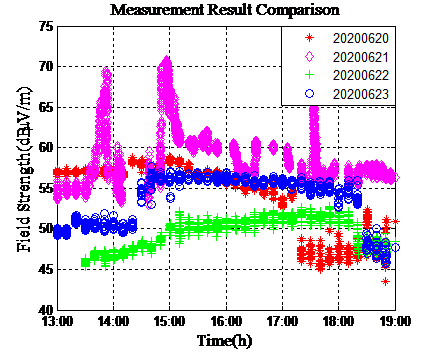Recently, the research team led by Prof. FENG Ping from the National Time Service Center(NTSC), the Chinese Academy of Sciences(CAS), has made new progress in the research on the influence of annular solar eclipse on low-frequency time-code signal. The results showed that the field strength of the low-frequency time-code signal undergoes "three sudden changes" during the entire solar eclipse on June 21, 2020.
The research results are published in the SENSORS journal “Variation of Low-Frequency Time-Code Signal Field Strength during the Annular Solar Eclipse on 21 June 2020: Observation and Analysis” (Sensors 2021, 21, 1216.).
The low-frequency time-code signal relies on the reflection of the ionosphere for long-distance propagation. When an annular solar eclipse occurs, the light from the Sun to the Earth is blocked by the moon, which changes the ionosphere of the earth, thereby affecting the normal reception of the low-frequency time-code signal.
Based on a large amount of test data, the researchers analyzed the influence of the solar eclipse on the low-frequency time-code signal, excluded the influence of solar activity and geomagnetic field changes, and confirmed that the change in signal field strength was caused by the influence of the solar eclipse on the ionosphere.
When an annular eclipse occurs, as the Sun is hidden, there is a low degree of ionisation (ions and electrons) in the ionosphere, and the ionospheric healing gradually accelerates. Long-distance transmissions have a dependence on the ionosphere for reflection. Therefore, in the low-frequency time-code signal propagation path, the height of lower ionosphere increased, the signal attenuation was small and the signal reaching the ground shows an enhanced state. After the eclipse, the density of charged particles shot by the sun to the earth recovered again because of the influence of the moon’s shade, the reflection height of the low ionosphere decreased gradually, and the signal field strength returned at a slow rate to its reference day value.

Field strength comparison of low-frequency time-code signal on the day of the annular eclipse and on the days before and after it(Image by NTSC)
CONTACT:
XIONG Tiantian
National Time Service Center, Chinese Academy of Science
gjhz@ntsc.ac.cn


